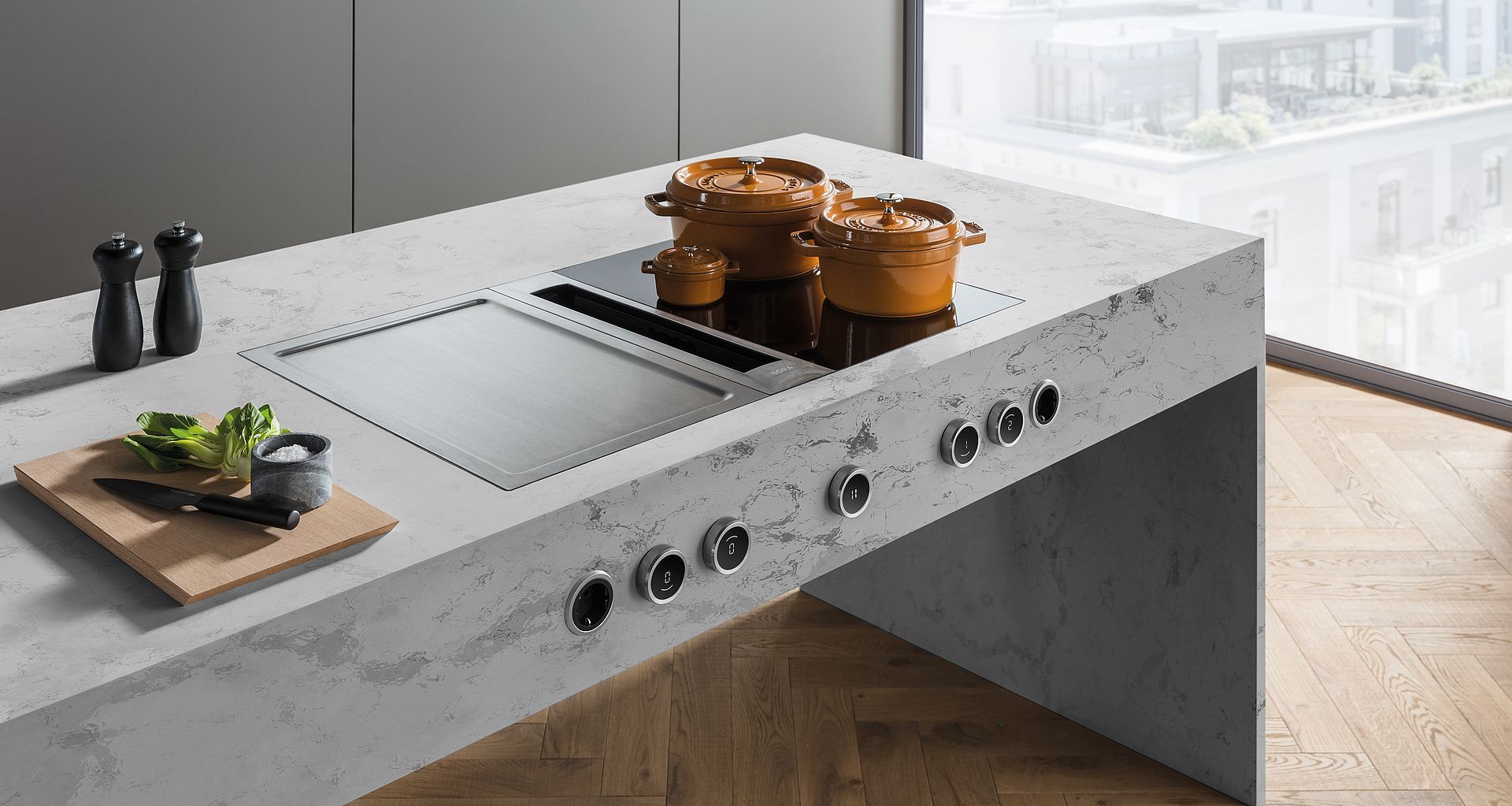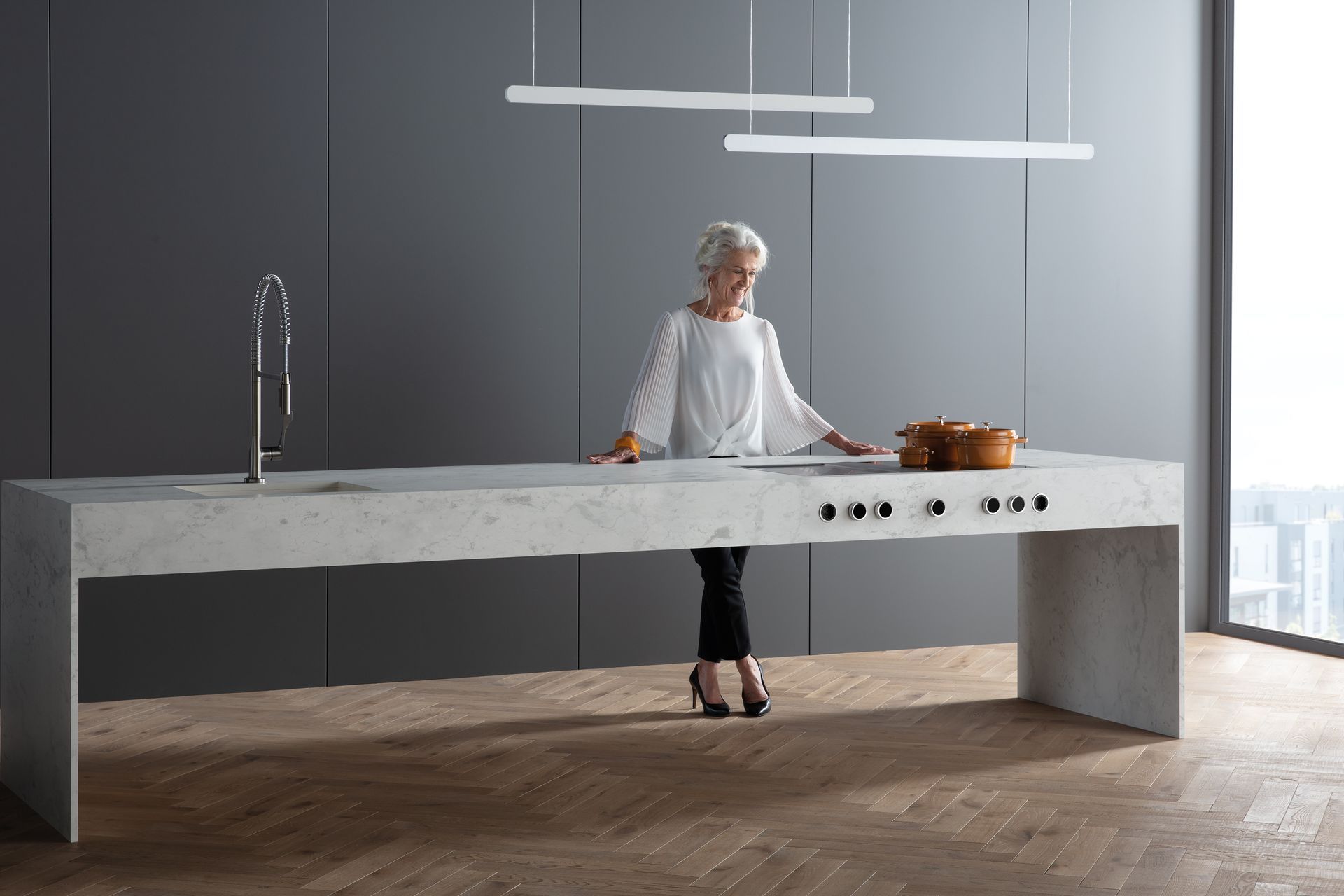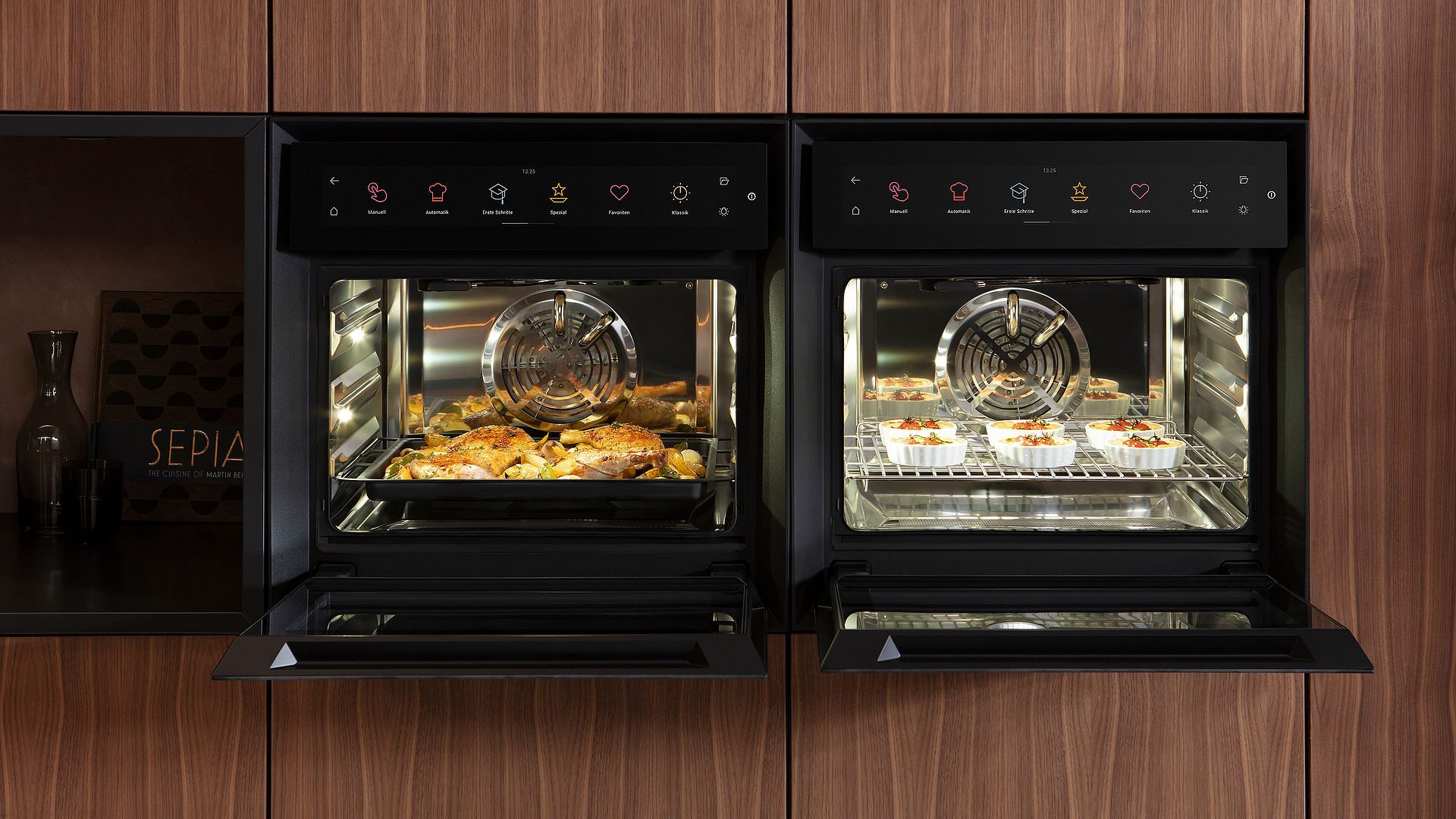Revolutionising kitchen design with downdraft exhaust fans and steam ovens
Written by
27 February 2024
•
6 min read

When it comes to kitchen design, the following innovative ergonomic appliances are pivotal in creating the ultimate culinary experience at home. ArchiPro speaks with Stefano Di Giovanni, Country Manager at BORA, on the benefits of downdraft exhaust fans, steam ovens versus traditional ovens, and never turning your back on your guests.
Innovative downdraft ventilation and steam oven pioneer BORA have experienced an increase in demand for more intelligent appliances over the past two decades. BORA’s advanced appliance solutions meet the demand for open-plan kitchens, cooking on island benches and socialising in the heart of the home.
“The way we entertain has changed; the formal dining room has been replaced with an open plan kitchen, lounging and dining,” says Di Giovanni.
“Often, guests are chatting and nibbling on food at the island bench, and so we’ve taken the ergonomics further with a ‘don’t turn your back on your guests’ solution – encouraging people to rethink their appliance layout and cook on the kitchen island bench,” Di Giovanni adds.

Downdraft versus overhead exhaust fans
Among recent innovations, the debate between downdraft and overhead exhaust fans has gained considerable traction, with downdraft exhaust fans making strides by offering a more versatile solution to kitchen ventilation. The ergonomics of downdraft systems provide a compelling argument, with traditional overhead exhaust fans often posing height, space and placement challenges.
“With downdraft systems, the extraction unit is discreetly integrated into the cooktop, eliminating the need for cumbersome overhead hoods. This provides unobstructed views and ensures that cooks of varying heights can work comfortably without the risk of bumping their heads,” says Di Giovanni.
Moreover, downdraft systems are advantageous in island benches, apartments and enclosed outdoor cooking spaces. In such configurations, where overhead ventilation might be impractical or aesthetically unappealing, downdraft systems offer a seamless solution.
“They effectively capture steam, grease, and odours at the source, enhancing air quality and minimising residue build-up on surrounding surfaces,” says Di Giovanni.
Di Giovanni lists other benefits of a downdraft extractor system, including aesthetics, noise reduction, efficiency and increased storage space.
“When installing downdraft ducting, you duct around the back of the cupboard, meaning you still have room for drawers underneath. You’ve ahead on space because you’ve gained the overhead space, where a range hood would usually sit, and have storage underneath the cooktop with its built-in extractor,” says Di Giovanni.
The benefits of combi-steam ovens
In parallel with advancements in ventilation, oven technology has also improved kitchen ergonomics. BORA’s Combi-steam ovens represent a welcome advancement in culinary innovation, combining the benefits of steam and conventional cooking methods within a single home appliance.
“The BORA combi-steam oven has the functionality of a commercial oven with a streamlined, sleek look,” says Di Giovanni. "It meets the current demands of consumers as glass has become popular again in the market because it's easier to clean than stainless steel. Also, due to new regulations and safety concerns, people are looking for a safer alternative to gas,” Di Giovanni adds.
According to Di Giovanni, traditional ovens (especially larger models) provide a challenge to achieving uniform cooking results. “With combi-steam ovens, the incorporation of steam ensures even heat distribution, resulting in succulent and evenly cooked meals. This eliminates the need for constant monitoring and rotation of dishes, enhancing both efficiency and cooking outcomes,” says Di Giovanni.
Furthermore, combi-steam ovens boast significant time-saving advantages. Rapid preheating capabilities and reduced cooking times by half compared to conventional ovens. “Our combi-steam ovens can reach 220 degrees Celsius in under four minutes, saving time and energy costs,” says Di Giovanni.

The BORA combi-steam oven range has numerous safety features, from detecting food temperature to its plumbed-in water filter, cold-to-the-touch door and auto-release steam-extraction feature.
“The auto-release button opens the door automatically and retracts the steam to prevent it from touching your face. This safety function is particularly beneficial for children,” says Di Giovanni. “The inbuilt temperature probe measures the temperature of the food being cooked, ensuring that it is cooked thoroughly – helping with food safety,” Di Giovanni adds.
Integrating innovative technology and app connectivity further enhances user convenience with features such as a nine-inch LCD screen, remote operation, self-cleaning and recipe management.
Bridging tradition with innovation
Despite the undeniable benefits of these innovative kitchen solutions, convincing traditionalists and older demographics to embrace change remains a challenge. “Decades of ingrained practices and preferences, particularly regarding oven and ventilation placement, necessitate a shift in mindset,” says Di Giovanni.
Companies like BORA recognise the importance of education and advocacy in promoting ergonomic design principles. BORA’s products' functional advantages and adaptability seek to bridge the gap between tradition and innovation. Moreover, strategic collaborations and initiatives to showcase the practical benefits of downdraft ventilation and combi-steam ovens can facilitate wider acceptance and adoption within the culinary community.
The pursuit of optimal ergonomics continues to drive innovation and transformation of kitchen design. Downdraft ventilation systems and combi-steam ovens exemplify this ethos, offering practical solutions for specifiers and homeowners to longstanding challenges while enhancing our cooking and social experiences.
To learn more about BORA’s innovative appliances and showrooms or to organise a live kitchen demonstration, head to BORA on ArchiPro.
